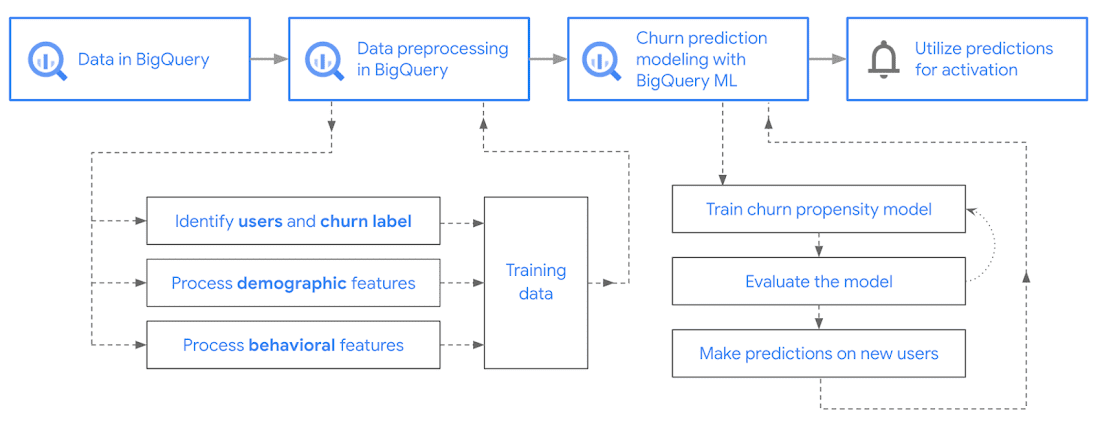GA4 is no longer plug-and-play
Universal Analytics (UA) and its presets made life easier for many, and also made the service accessible to the general public. However, when it comes to its successor, GA4 (Google Analytics 4), don’t necessarily expect much from the basic setup.
Get ready for meticulous planning of what you want to track and a brand new user interface. Based on the Pareto Principle (80:20), Google has removed 80% of the pre-programmed content.
We are stepping back into the days of complex DIY without simplifications and shortcuts.
GA4 vs UA: You can achieve more, but there’s a catch
You will find a new and complex environment that you will be unable to navigate by relying on your intuition. There are paths you will have to learn all over again.
Universal Analytics represented a set of complex static reports that could not be interfered with.
However, the new GA4 (Google Analytics 4) is tailored for analytics experts by offering plenty of flexibility options. Small businesses that want to perform analytical tasks on their own will be particularly affected.

From UA to GA4: expect apples and pears for the first year
Be ready for the fact that during the migration, interannual fluctuations will inevitably appear. If you have both platforms running concurrently (as we do), you will quickly find that many of the measured metrics are different.
One of the reasons is the huge push to get everyone, along with tracking data, onto GA4 by the 1st of July 2023. In addition, GA4 uses a completely new, attribution, data-driven model.
There is a chance that you will not get to see the first reliable year-on-year figures until as late as July 2024.
SQL and BigQuery are your new best friends
With the arrival of Google Analytics 4 (GA4), SQL and BigQuery will be critical for data analysis.
The combination of SQL and BigQuery is the only one that will enable advanced querying, transformations and analysis of exported raw data from GA4.
This integration enables you to gain valuable insights, perform customised calculations and make decisions based on highly granular data.
The advantage is the simplified integration that GA4 provides, especially when compared to Universal Analytics (UA).
Not familiar with BigQuery?
BigQuery is a highly scalable data warehouse running directly on Google Cloud. Historically, Google has used it for its own purposes. Nowadays, however, it is available to everyone.
It is a centralised place for the collection, modification and linking together of different data sources. BigQuery has long been popular mainly among data analysts in instances where they need to perform advanced analysis and obtain information from large datasets.
With GA4, rejected cookies will no longer be a problem
The collection of personal data and privacy protection is a growing concern. Therefore, one of the main drivers behind Google Analytics 4 (GA4) is the move away from cookies as the main method of traffic measurement.
In practice, this means that even in instances where the customer does not give you consent for data collection, Google can fill in the data collection gaps based on behavioural modelling.
Behavioural modelling
Work is gradually being done on the development of prediction and modelling of behaviour based on machine learning as a replacement for cookie-based tracking.
The data is modelled on the existing behavioural patterns of users who have already interacted with your website or app.

A more detailed customer journey awaits
The GA4 model is based on events. Detailed event logging gives you a much better understanding of how users discovered your brand, how they shop, when they just browse, and where they will convert.
For example, based on the User-ID parameter, GA4 will allow you to combine data from different devices, giving you a more complete view of your customer’s typical journey.
In practice, this means that if a customer discovered your brand using Google Ads on a mobile device during the SEE phase and later converted on their PC via an ad in Google Shopping in the DO phase, the User-ID will allow you to attribute this behavior to a single user.
New GA4 predictive metrics
GA4 delivers a new wave of insights and AI predictions of your customers’ behaviour based on your structured data and advanced real-time machine learning. So, be ready to work with multiple metrics.
Likelihood of purchase
Based on your data and AI insights, Google determines how likely it is that a user who has been active in the last 28 days will create a conversion event in the next 7 days.
Probability of losing a customer
In this case, it will create a probability that determines whether a user who was active in your app or on your website in the last 7 days will remain inactive over the next 7 days.
Estimated sales
This is the expected revenue from all purchase conversions over the next 28 days from a user who has been active in the last 28 days.

Do you need help?
Don’t lose important data during migration. Data makes campaigns and ads work and helps you acquire new customers. If you don’t know how to deal with migration, get in touch and we’ll be happy to help.






